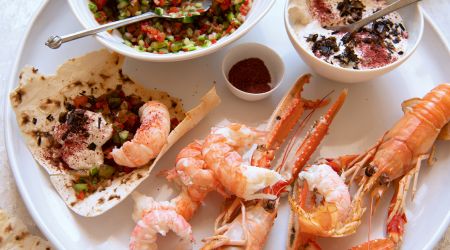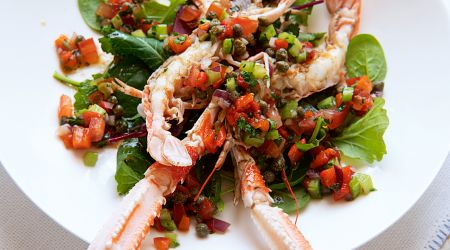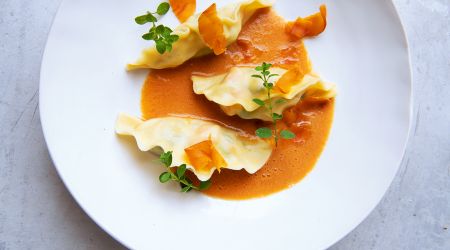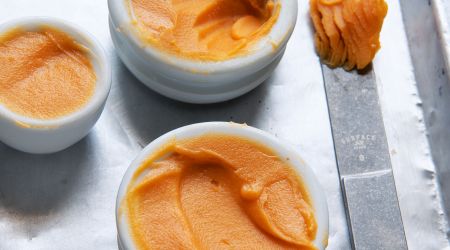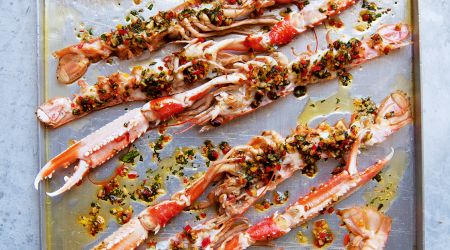Langoustine
This nippy Scottish crustacea had been a sustainable seafood stalwart long before the Michelin-starred chefs got involved. Clarissa Hyman gets to grips with the multi-monikered wee beastie
In a post-Brexit world, will the greater- spotted scampi once more be found nesting in its finely crafted woven basket in the finest watering holes of our proud nation? Will it be farewell to the showy European langoustine, all carapace and claws? Deportation for the invasive predator that is garlic butter? Is it red card time for foreign French frites, matchstick usurpers of the chunky dripping-fried chips that made this nation great? Will it herald the renaissance of jarred lemon slices and the long-lost sprig of parsley garnish? As to the Dublin Bay prawn, border negotiations are as tortuous as a po-faced front-bencher’s sense of humour. [Enough already, Ed.] But whatever you call them – Dublin Bay prawns, scampi (Italian), Norway lobster,cigale and langostina (Spanish), kaisergranat(German), jomfruhummer (Danish) – they all answer to the Latin name of Nephrops norvegicus. Yes, they’re essentially one and the same and equally popular. Including the marvellously monikered Florida lobsterette.
In the line-up of the crustacean clan they take their place somewhere in the middle, being larger than a prawn, smaller than a lobster, and provide sweet, fragile meat – even if they do look like bug-eyed monsters. Their colourings, however, have a designer elegance: fiery red to pale pink, rose, orange-red and white. Unusually, they hardly change colour when cooked, although the flesh on the underside will turn from translucent to opaque.
For such a fierce-looking critter, langoustines are surprisingly shy. Their homes are burrows in silty, muddy parts of the seabed from which they emerge at night to feed on worms, fishes and small crustaceans, and to breed. Once with ‘berries’, the females can stay snuggled down for months while incubating the eggs.
Langoustines are found from Iceland to Morocco and in the west and central Mediterranean. They are abundant on the coast of Norway, hence their alternative name, and there is a large colony in the Adriatic; they star in a particularly delicious risotto from the Dalmatian coast. According to the FAO, 60,000 tonnes are caught annually around the world, half of it in UK waters. Ironically, there are no Dublin Bay prawns in Dublin Bay. They acquired the name because the fishing boats coming into Dublin Bay had caught them elsewhere accidentally. Not being fish, they could not be passed on to Dublin’s street-vendors, so they were sold out in the bay in a kind of floating black market.
In the mid-19th century, records in Billingsgate show that many Norway lobsters were imported; for every regular lobster sold, four of the former were sold. Nonetheless, as recently as a generation ago, British fishermen dumped langoustines they caught as they were deemed not worth the effort. Trawler fishing expanded the catch but it has drawbacks such as habitat disturbance and other species discards.
Although there is a minimum landing size in place, the most sustainable way to catch langoustines is the Scottish way, with creels or pots. Once caught, whole live ones can be treated like mini-lobsters and boiled. You have to be quick, though; they simply don’t have the resilience of a lobster or crab and will die in a matter of hours. The late William Black described long dead ‘fresh’ langoustines as tasting like cotton wool.
A common British practice is to separate the tails and freeze them, which breaks down the membrane that holds the meat to the carapace. These are then thawed, shelled, cleaned and refrozen. They need only the briefest of cooking.
Langoustines are hugely important to the Scottish fishing industry, second only to mackerel. The turbulent cold seas of the Corryvreckan ‘whirlpool’, between Scotland’s west coast and the Inner Hebrides, is home to what many consider to be the finest crustaceans in the world – some can even reach 500g in weight. A large share of the catch is sent to Europe; much of the remainder is still processed into crumbed scampi.
Langoustines pair well with flavours such as lemon, garlic, basil and sage. The tails are excellent in stir-fries, posh fish pies and pasta dishes. Michel Roux Jr gives them the haute cuisine treatment with Dover sole, asparagus, samphire and white wine sauce, while The Hairy Bikers go back to British basics with their beer-battered scampi and tartare sauce. Another retro favourite is poached Scampi Provençal.
Hugh Fearnley-Whittingstall favours the simplest of approaches, matching them with lemony mayo or olive oil dressing. Elizabeth David thought their delicate flavour was best savoured if the tails were cooked in their shells in salted water for ten minutes and then served hot with melted butter.
Eating a whole langoustine is a sybaritic if sometimes messy experience. The trick is to twist off the head, pinch the tail to crack the shell, then pull it away from the flesh. You can discard the heads (or use in fish stock) but they do contain an edible, creamy pink paste that you can scoop out with a cocktail stick. Crack, peel, dip. Slurp, savour, sigh. Repeat forever.
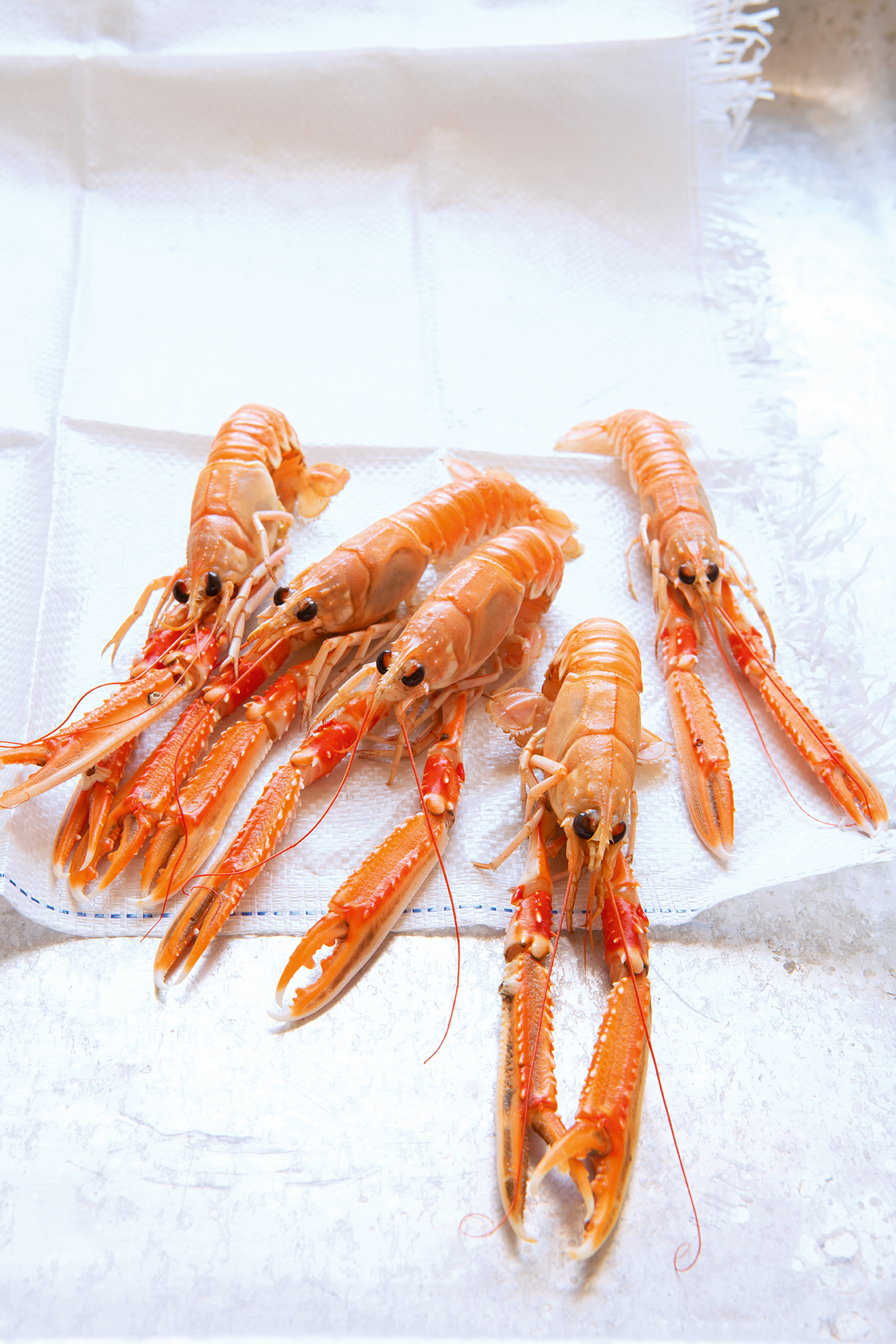
Recipes
Get Premium access to all the latest content online
Subscribe and view full print editions online... Subscribe

